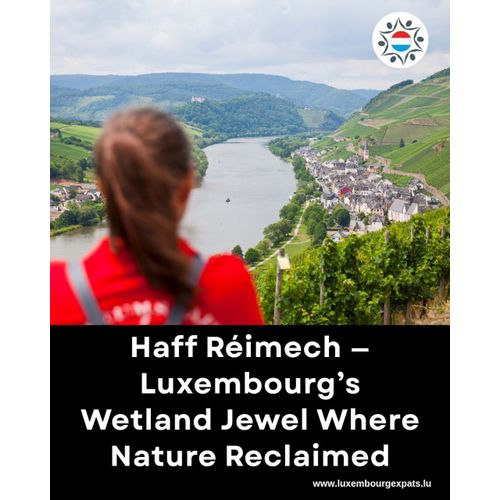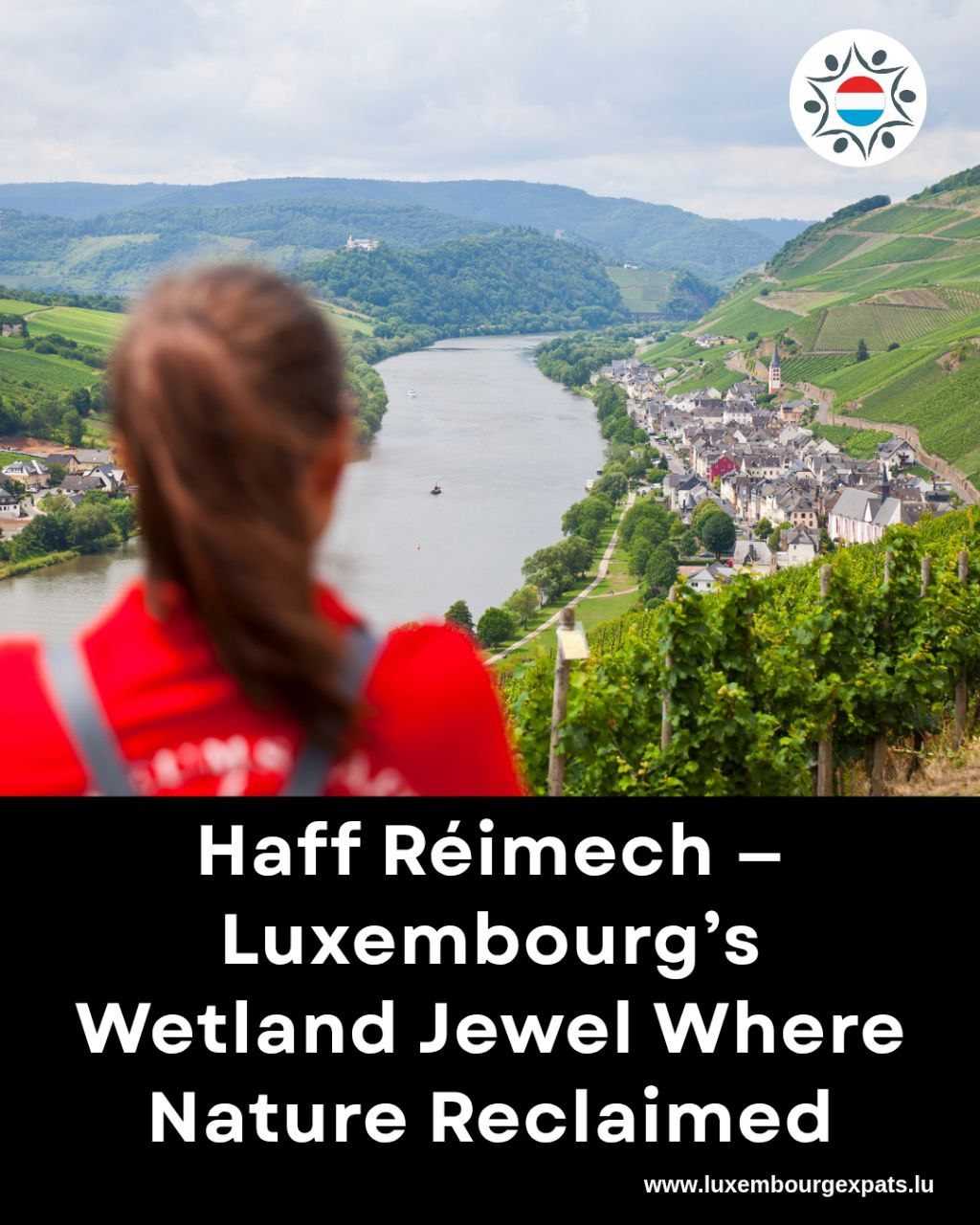Haff Réimech — Luxembourg’s Wetland Jewel Where Nature Reclaimed a Quarry
LuxembourgPosted on 15 November 2025 by TeamHaff Réimech sits quietly in the Moselle valley at the meeting point of vineyard slopes and river plain, a mosaic of ponds, reed beds and successional habitats that has grown out of former gravel and sand excavations. Over decades the abandoned pits filled with groundwater and slowly transformed into a rich wetland ecosystem that today supports an extraordinary variety of life in a surprisingly compact area. The site combines open water, marsh, wet meadows and scrub, and the changing water levels and plant succession create a shifting patchwork of habitats that wildlife — especially birds — uses in different seasons.
This wetland plays an outsized role for migratory and breeding birds. More than 250 bird species have been recorded in the area, making it one of the most important birding sites in the country. Surveys have documented dozens of species protected under European bird conservation rules, and the site holds several water-bird species that are particularly rare elsewhere in the country. At different times of year the ponds host breeding birds such as reed specialists and grebes, while autumn and spring migrations bring waves of passage species and winter visitors that rely on the refuge the ponds provide.
Plant life at Haff Réimech is notable for its diversity and for the presence of many species that are rare in the surrounding region. Seasonal fluctuations in water depth expose mudflats and shallows where specialised aquatic and semi-aquatic plants flourish; published surveys list roughly thirty plant species of regional conservation concern. The variety of vegetation zones — from open water to reed beds, wet grassland and scrub — also supports an abundant invertebrate fauna, including a rich assemblage of dragonflies and damselflies that delights naturalists and photographers alike.
The area is managed to balance conservation, education and low-impact recreation. Trails and discreet observation hides give visitors the chance to watch wildlife without disturbing sensitive breeding areas, and an interpretation centre near the reserve helps explain the site’s ecology and the story of its regeneration from industrial use into habitat. While one pond is used for limited recreational activities, most of the wetland is set aside for nature, and a management plan guides how different zones are used and protected to maintain ecological function.
Haff Réimech is also important at a larger scale: its ponds and reedbeds act as stepping stones for migratory birds travelling along the river corridor, and its wetlands contribute to local water quality and flood buffering. The site’s conservation value is increased by the surrounding cultural landscape of vineyards and hedgerows, which together form a varied matrix that benefits many species. That combination of local habitat quality and regional connectivity is why the area has been recognised under international wetland and habitat protection frameworks.
Despite its success, the reserve faces familiar pressures: habitat succession that can reduce open water area, invasive or introduced species, and the need to reconcile human use with wildlife needs. Continued monitoring, careful water-level management and targeted habitat work — for example creating shallow bays, maintaining reed margins and protecting breeding islands — are used to keep the site in a condition that supports both specialist and widespread species.
For photographers, birdwatchers and anyone curious about how nature heals and re-engineers the landscape, Haff Réimech is a vivid example of ecological resilience. From the first warblers in spring to the winter flocks on the open water, the reserve offers repeated reminders that thoughtful protection and adaptive management can turn former extraction sites into biodiversity havens.
Read More : Natura 2000: Luxembourg’s contribution to European nature conservation - Luxembourg
Join the community of your own - #1 home-grown LuxExpats app
SignUp Free : luxembourgexpats.lu
I am your contact
Team
Chat









